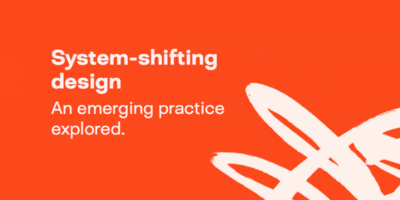HYDRO: Driving up production

In 2014 HYDRO, a specialist in build-and-strip tooling for the aerospace sector, took part in Design Council’s Design for Supply Chains programme to help it drive up production, reduce waste and improve its visibility and market positioning.
Background
Strategic design is a powerful catalyst for innovation within organisations and, when used effectively, it can contribute significantly to boosting competitiveness and delivering growth.
Design Council’s Design for Supply Chains programme offered strategic design direction to enable supply chain companies to identify innovation opportunities and ensure that existing products, processes and services were managed to the highest design standards. This strategic approach, matched with practical hands-on support, was formulated to increase the innovation opportunities while strengthening the design capability of the supply chain.
When HYDRO joined the Design for Supply Chains programme they were experiencing multiple business challenges, including:
- a lack of marketing alignment which had the potential to inhibit long-term growth
- large and diverse stakeholder groups within its main customer
- several different contact points that made communications highly complex.
What Design Council did
Design Council's Design Associate, Jonathan Ball, ran a workshop with the senior team at HYDRO to identify strategic design opportunities relevant to HYDRO’s business ambitions. Having undertaken an in-depth exploration of HYDRO’s vision, strategy, customers and brand, Jonathan identified a series of opportunities for improvement and innovation that would help to address some of the challenges it was facing.
HYDRO appointed a dedicated internal team and involved staff from the engineering and quality departments as required. This ensured that the proposed improvements were supported by everyone affected.
Jonathan and HYDRO identified that they could improve business and working relationship with their customers by addressing the following three areas:
- Vision & Strategy: defining an ambition for the business
- Brand & Communication: defining and taking ownership of the HYDRO brand
- Product & Service: customer journey and service blueprinting.
Full buy-in from senior management was critical to the success of the project. HYDRO appointed a dedicated internal team and involved staff from the engineering and quality departments as required. This ensured that the proposed improvements were supported by everyone affected.
Vision and Strategy
With the support of Design Council’s team, HYDRO shaped a UK strategy roadmap. This was approved by its Germany-based board, providing more autonomy from its Head Office and helping to clarify what it was doing throughout the entire company.
Brand and Communications
HYDRO also began work to define and take ownership of its brand in the UK market. It began by promoting its services and image within the wider HYDRO group. This included a marketing video to promote itself both internally and to other businesses outside of the aerospace sector. This video now plays on a loop in the group HQ reception in Germany. As Chris Guy, Engineering Manager, said: “We’ve really improved our marketing and communications work for an external audience. We now have weekly newsletters, videos, brochures – we’re better at telling our own story.”
Product and Service
The HYDRO team mapped the process for responding to customer requests, enabling it to look at the whole picture of its customer journey for the first time and develop a common understanding of the experience that underpinned the service HYDRO delivers to its clients.
The interactions – or 'touchpoints' – with Hydro’s customers where improvements could be made were identified and approaches to redesigning them were developed. Service blueprinting techniques were used to visualise the future state of its customer service experience. This resulted in HYDRO shifting focus from a linear, engineering-led process to delivering a complete service experience.
While the initial objective of this project was to improve the service that HYDRO provides to its customers, it has had the added benefit of streamlining other processes and the new approaches are now used on services delivered to all customers.
Results
While HYDRO has always been design-focused, the programme implemented additional changes to its total solution service. By participating in the programme, HYDRO’s overall design capability has improved.
Design Associate Jonathan Ball explained: “HYDRO responded to three distinct and valuable design opportunities. As a result, they have strengthened their position within their parent company, are building the leading brand in their sector and are shaping and delivering services in a sector where most are still purely process-orientated.”
We’ve been planning and measuring better, and we’ve been consistently hitting forecasted revenues for the past 18 months
Jonathan Farnfield, Operations Director at HYDRO
Chris Guy, Engineering Manager, described how HYDRO reacted to the changes: “The feeling was undoubtedly positive, as the dedicated team were empowered and involved in the evaluation and improvements, which made their everyday work simpler and easier. Plus, due to better communication we believe that the workforce en-masse now feels more involved in the business.”
Jonathan Farnfield, Operations Director at HYDRO explained: “There’s been a notable improvement in productivity and reduction of waste, which is obviously one of our chief concerns. Our improved and clearly defined processes – with reduced touchpoints – have made things simpler to follow. We’ve also been planning and measuring better, with vastly improved forecasting and revenue realisation on a monthly basis, and we’ve been consistently hitting forecasted revenues for the past 18 months.”
Subscribe to our newsletter
Want to keep up with the latest from the Design Council?

